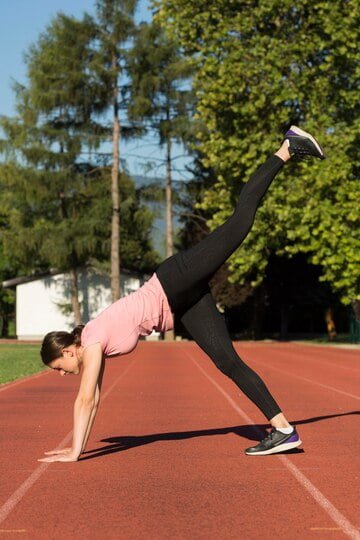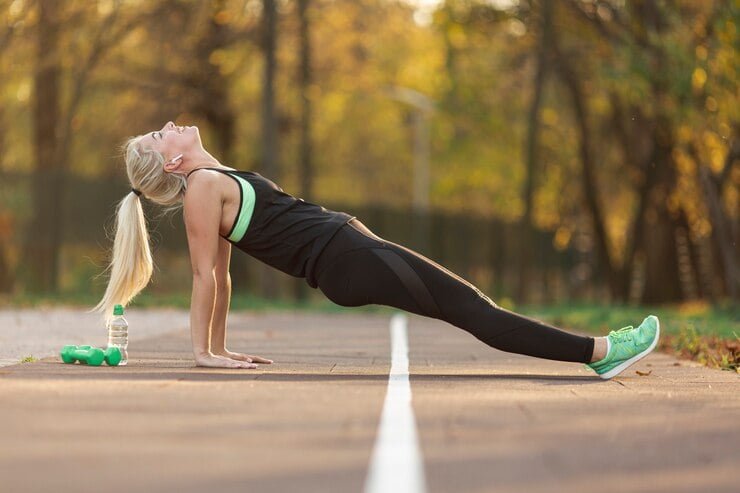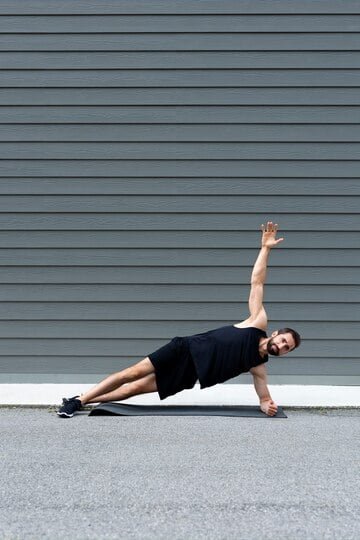
Running, as it is widely known, is mainly viewed as a lower-body exercise or workout that mainly involves the legs and feet. Nonetheless, concentrating on the lower body alone can cause imbalances and missed opportunities to enhance performance. When an athlete include workouts of his or her upper body into a runner’s schedule, there are improvements in posture which leads to better breathing efficiency and running mechanics at large. The ensuing discussion will deliberate on the advantages of upper body strength training among runners, delve into some of the exercises that can help with this, and answer common queries in between.
Why Upper Body Strength Matters for Runners
Improved Posture and Form
Stronger muscles in the upper part of the body assist in maintaining a good posture during long distance runs. A well-aligned posture reduces energy expenditure and fatigue; thus helping runners maintain their pace. Additionally, strong shoulders and back muscles support efficient arm swings which promotes balanced stride reducing risk of injury due to other compensatory movements.
Better Breathing Efficiency
Breathing also depends on how strong these muscles are around your chest and shoulders. By developing them properly, runners enable themselves to have effective breathing patterns allowing for better oxygen consumption leading to improved endurance.
Overall Balance and Coordination
Thus when we talk about balance we do not refer only to standing upright on one leg but also includes coordination (Riley et al., 2013). As such coordination applies across different race terrains where sprints need stable push-off for quick movement along with smooth transition from one leg to another hence an individual needs developed muscles in his or her whole body.
Effective Upper Body Exercises for Runners
Push-Ups
Pushups are a classic exercise that targets chest muscles as well as triceps located on our shoulder area (Kokkinos et al., 2010). Moreover, they involve all other core muscles making this form complete upper body workout.
How to Perform:
Start in a plank position with your hands slightly wider than shoulder-width apart.
Lower your body until your chest almost touches the ground.
Push back up to the starting position.

Tip:
To get maximum engagement of core muscles, keep straight from head to heels.
Plank Rows
Plank rows reinforce core stabilization as well as strengthening upper back and shoulders.
How to Perform:
Start in a plank position with a dumbbell in each hand.
Row one dumbbell towards your rib cage while balancing on the opposite arm and toes.
Return the dumbbell to the ground and repeat on the other side.
Tip: Your core should be tightened while at the same time hips must not rotate for maximal stability.
Dumbbell Shoulder Press
These movements focus on making stronger that part of our body which involves triceps under shoulders hence increases swing power in arms over long runs (Spurway & McNaughton, 2007).
How to Perform:
Stand or sit with a dumbbell in each hand at shoulder height.
Press the weights overhead until your arms are fully extended.
Lower back to the starting position.
Tip: Tighten core muscles so that you don’t curve lower back
Bent-Over Rows
This exercise improves posture since it strengthens muscles located behind an individual’s trunk during running (Delextrat et al., 2010).

How to Perform:
Stand with feet hip-width apart, holding a dumbbell in each hand.
Bend at the hips, keeping your back straight, and pull the weights towards your lower ribs.
Lower the weights back down and repeat.
Tip: For best contraction, squeeze shoulder blades together at top point of movement
Lateral Raises
Lateral raises help target those shoulder muscles for improved arm drives which assist in maintaining speed over longer distances (Waugh et al., 2013).
How to Perform:
Stand with feet hip-width apart, holding a dumbbell in each hand at your sides.
Raise your arms out to the sides until they are parallel to the ground.
Slowly lower to the starting position.
Tip: Ensure correct shoulder activation by leading with elbows.
Tricep Dips
Tricep dips focus on the triceps, thereby contributing to arm endurance and stability.
How to Perform:
Sit down near the edge of a bench or a chair with your hands beside your hips.
Push your bum forward off the bench so that you are being supported by your arms only.
Bend at the elbows to lower yourself, and then push up again.
Tip: Ensure that your elbows remain close to your body in order to make this exercise more effective for your triceps.

FAQs
What is the frequency of upper body exercises among runners?
It is advised that runners incorporate upper body exercises into their routines twice or three times per week. These workouts can be executed on days without running activities or after short runs in order promote maximum recovery.
Does upper body strength training have a negative impact on my speed as a runner?
Upper body strength training if done correctly will not slow you down instead it improves running economy through optimizing posture and arms drive which in turn increases speed and endurance while running.
How do I know that my upper body is weak?
Indications of weak upper body include poor posture, rounded shoulders, arm fatigue during long runs and an inability to maintain a good arm swing.
Conclusion
For runners, however , it’s a different story. Upper body strength is an integral element of any training program, which improves performance, prevents injury and guarantees long term involvement in the sport. Incorporate these exercises outlined above to elevate your running to the next level for more efficient and enjoyable experience on every run.
Ready to take your running game up a notch? Start incorporating these upper-body movements now and feel the difference! If you’d like more personal advice, consider talking with a running coach or fitness professional who can put together workouts that are tailored for you. Have fun!